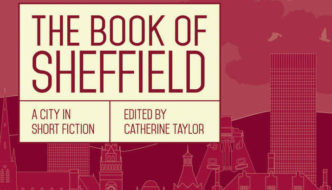10 Rules for Writing Young Adult Fiction
April 12, 2015
There are many debates going on about exactly what makes Young Adult (YA) fiction writing different to regular adult fiction. Tone of voice, use of language, and subject matter are undoubtedly contributing factors to the unique style of YA fiction writing. Here are my ten principal rules for writing YA fiction…
Ensure use of language is appropriate to the reader
Whilst the importance of technical correctness is, of course, still important when writing Young Adult fiction, there are certain cases where it is acceptable to allow some leeway. It is important for the writing to flow and read naturally in YA fiction. If this technique is applied selectively, then breaking the grammar rules is acceptable (especially in dialogue) and the use of colloquialisms is acceptable. Including a natural, chatty style of writing is youthful and appeals to the target audience.
Use description effectively
Some of the most effective passages of Young Adult fiction are descriptions that set the scene or give detail about a character. John Green is a master of this. His use of description is particularly good in Paper Towns. Green’s descriptions work for the YA market because, instead of giving a general overview of a place, he zones in and creates a scene from there. Using description is a great way to show rather than tell the reader how a character is feeling, which is even more prominent when trying to captivate the attention of a teenage reader.

Make every incident important
In most cases, a teenager’s world is fairly limited to school, home, a friend’s house, the park etc. What may seem like a small incident to an adult, and therefore in an adult book, would consume a whole child’s world. For example, in John Green’s Will Grayson, one of the main events is Tiny’s musical. In Tiny’s world, his musical consumes everything, and Green effectively conveys the stresses and troubles Tiny faces. However, it is also important to use careful plotting to ensure that a YA book has enough twists and exciting incidents to keep the reader captivated.

Keep up to date with the latest trends
Every author should follow the rule to read as much as possible. Reading other YA books, and indeed any kind of writing, can only help a writer’s development. However, it is also important to check the news regularly and stay active on social media. In order to appeal to the YA market, the characters must be realistic, and so should the way in which they interact with each other. Whilst most people use Facebook and Twitter regularly, younger teens are also using Instagram, Vine and Snapchat. Having knowledge of the latest trends and crazes helps to ensure you know your audience and, in turn, creates more believable characters that Young Adult readers can empathize with. However, whilst it is tempting to use the internet to excess, do restrict your internet browsing to a certain amount of time per day so as not to get distracted!
Don’t be afraid to rewrite
This rule is just as pertinent no matter what style or genre of writing. The importance of redrafting and editing is vitally important. Many successful writers stress the importance of redrafting, and whilst it is daunting to go through your work and make drastic changes, often this is needed.
Write what you know or can know
It is important to write within the boundaries of your own knowledge (even if you have to do extensive research in order to acquire that knowledge). For example, Lisa Williamson worked as a specialist helping young people struggling with gender identity issues. This inspired her to write The Art of Being Normal. Even if you aren’t writing from personal experience, you must ensure that a piece of writing is honest and accurate, especially if you are tackling an issue. Melvin Burgess said of Junk, “This book isn’t fact; it isn’t even fiction. But it’s all true, every word.” What a perfect way of putting it!

Choose the number of characters carefully
With too many characters it is often difficult to keep track, though it is tricky to write YA fiction without having a range of characters, especially in a school setting. Having a large number of characters (whilst not ideal) isn’t a problem as long as each character has their place in the story. Ensuring that every character is unique and has their own distinct voice helps the reader not to become confused. However, as a general rule, don’t have more than three or four principal characters in a YA novel.
Write from a YA perspective
Using the right kind of language and making sure the dialogue between characters is realistic is vital. Also, rereading and redrafting from a fresh perspective helps to iron out anything that doesn’t sound natural or reads as though it is staged to sound “young”. Language and colloquialisms change all the time, so keeping up to date with social media helps to gain insight into the fast changing way young people talk and the language they use.
Read aloud
Whilst this can apply to all forms or writing, it is very important for YA fiction writers, and is particularly relevant when it comes to editing dialogue. Often, a conversation can look and read perfectly on paper during a first edit, but when read aloud it sounds stilted and unnatural. This kind of thing doesn’t go unnoticed in YA fiction, as jarring sentences and unnatural phrases really do put the reader off.
Don’t preach
Many YA books cover dark subject matter and issues, but it is important not to patronize the reader. As long as difficult subjects are handled well, controversial topics can be enjoyed by teenagers. Many successful YA fiction writers use humour to contrast with a potentially dark topic, and almost always finish with a hopeful ending. The “show, not tell” rule fits well into this, as demonstrating the main theme or message through the character’s journey is a far better way of doing it than simply writing a page of prose forcing the message to the reader.
Sophie Jo Cartwright
Read our interview with YA fiction author Melvin Burgess




Comments